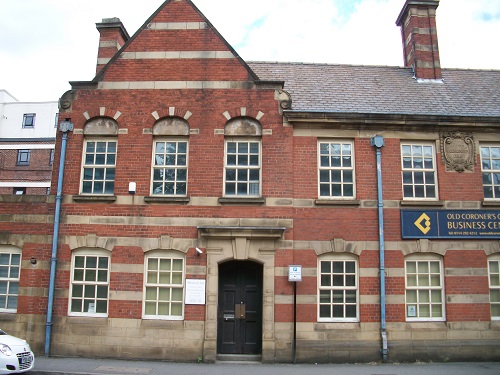 Following Tuesday’s Planning Committee meeting Walkley Green Councillor Bernard Little has called for the Council to give a strong steer to officers to de-culvert large sections of the River Sheaf on the Castlegate site.
Following Tuesday’s Planning Committee meeting Walkley Green Councillor Bernard Little has called for the Council to give a strong steer to officers to de-culvert large sections of the River Sheaf on the Castlegate site.
The Planning Application to redevelop the former Castle Market site was passed by Committee but the de-culverting of the River Sheaf was left as a reserved matter to be determined outside the meeting.
The Environment Agency and the Sheaf and Porter River Trust have both called for a greater emphasis in the development proposals on de-culverting.
Councillor Little speaking after the Planning and Highways Committee meeting said,
“ As things stand the application still has large sections of the River Sheaf still covered from public view. If this is followed through to the actual development we will have missed a great opportunity to rediscover the river that named our city and we will not gain the many benefits that come from having open water running through an urban environment.
“The positive impact on people’s well-being and on local biodiversity of being close to a flowing river are well known. We should really be giving a stronger steer to the Council that we need to be improving the local environment when we develop somewhere as important to our heritage as the site of the former Sheffield Castle. That is why I am calling for this matter to be raised by the Council’s Transport, Regeneration and Climate Committee so they can give a strong steer to the Council that we want to see greater de-culverting of large sections of the river and making it accessible to the public in line with proposals from Sheaf and Porter River Trust”
Tag: castlegate
Working to save City heritage

Green councillors have been working to save the Old Coroner’s Court on Nursery St, an attractive building opposite the Nursery St Pocket Park – and with some success so far.
The issue has opened up the debate about the protection of what is left of the heritage in the city centre.
According to Valerie Bayliss of the Victorian Society, it was built in 1913 to the designs of the first city architect, F E P Philips. It was state-of-the-art at that time, integrating coroner’s court, mortuary, post-mortem rooms, viewing chapel, witnesses’ waiting rooms and police accommodation together with a yard and stabling. Bomb damage in the Second World War led to internal remodelling in the 1950s before it was used as the Youth Court but it remains an important structure, close to two listed buildings and contributing significantly to the environment of the area.
Above all, it is an attractive and balanced building that lends a sense of calm to the area – no doubt something that was intended when family of the deceased had to attend the official courtroom of the coroner. However, it is not a listed building.
The court recently came under threat as a property developer gave notice of his intention to demolish it in August and clear the land to build flats on.

Councillor Douglas Johnson explained, “I became aware of the plan to demolish the building and raised the concerns with council officers in the planning department and with heritage campaigners. I found out that the formal powers available to the council to protect our heritage are very limited.
“I then talked directly to the developer about our concerns and we discussed the opportunities for a sensitive development of the area. He agreed to withdraw his application to demolish the building and to have a fresh look at what could be done with the site.”
The work with heritage campaigners has led to Green councillors asking the council to give further protection to the heritage of the Castlegate area, so that the forthcoming development there will preserve the remainder of the historic heart of the city.
No doubt, further plans for redevelopment will appear soon. Let us know if you would like to be kept informed.
